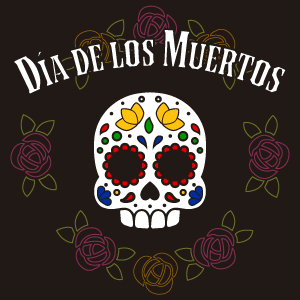- Stillwater Public Schools
- Cultural Observances, Holidays & Events
Día de los Muertos (Day of the Dead)
 Día de los Muertos, commonly known as the "Day of the Dead," is a vibrant and culturally significant Mexican holiday celebrated on November 1st and 2nd. It is a time when families and communities come together to honor and remember their deceased loved ones. While it might sound somber, Día de los Muertos is actually a lively and festive occasion that celebrates the cycle of life and death. Here are some key aspects of this holiday:
Día de los Muertos, commonly known as the "Day of the Dead," is a vibrant and culturally significant Mexican holiday celebrated on November 1st and 2nd. It is a time when families and communities come together to honor and remember their deceased loved ones. While it might sound somber, Día de los Muertos is actually a lively and festive occasion that celebrates the cycle of life and death. Here are some key aspects of this holiday:
-
Dates: Día de los Muertos spans two days, November 1st and 2nd. November 1st is known as Día de los Inocentes (Day of the Innocents) or Día de los Angelitos (Day of the Little Angels), dedicated to honoring deceased children. November 2nd is the main celebration, known as Día de los Muertos (Day of the Dead), when all deceased individuals are remembered.
-
Altars (Ofrendas): Families create elaborate altars in their homes or at gravesites to honor the deceased. These altars are adorned with marigold flowers, candles, incense, sugar skulls (calaveras de azúcar), photographs of the departed, favorite foods and drinks of the deceased, and other symbolic offerings. The ofrendas are meant to entice the spirits of the departed to return and enjoy the essence of the items left for them.
-
Sugar Skulls and Pan de Muerto: Sugar skulls, or calaveras de azúcar, are intricately decorated with colorful icing and are a common symbol of the holiday. They are often inscribed with the names of the deceased. Pan de Muerto, or "Bread of the Dead," is a sweet bread shaped like a skull or bones and is a traditional food item during this time.
-
Cemeteries and Grave Visits: Families visit cemeteries to clean and decorate the graves of their loved ones. They spend time at the gravesites, sharing stories and memories, and sometimes even having a picnic or playing music. It's a joyful and communal experience.
-
Calacas and Catrinas: Calacas are skeletal figures, and Catrinas are elegantly dressed female skeletons. These figures are often depicted in artwork, costumes, and parades during the Day of the Dead celebrations. They symbolize the idea that death is a natural part of life.
-
Marigolds (Cempasúchil): Bright orange marigold flowers are an essential element of Día de los Muertos. They are believed to help guide the spirits of the deceased to the ofrendas and are used to create intricate floral arrangements.
-
Music and Dance: Festive music and dance are integral to the celebration. Traditional Mexican music, including mariachi and banda, is often heard during Día de los Muertos events, as well as lively dances like La Danza de los Viejitos.
-
Face Painting and Masks: Many people, both young and old, paint their faces to resemble skulls or wear masks during the festivities. These artistic expressions symbolize the merging of life and death.
Día de los Muertos is a unique and beautiful blend of indigenous Mexican traditions and Catholicism. It is a time for families to come together, remember their ancestors, and celebrate the continuity of life. The belief is that the spirits of the departed return to enjoy the offerings and the company of the living during this special time.

